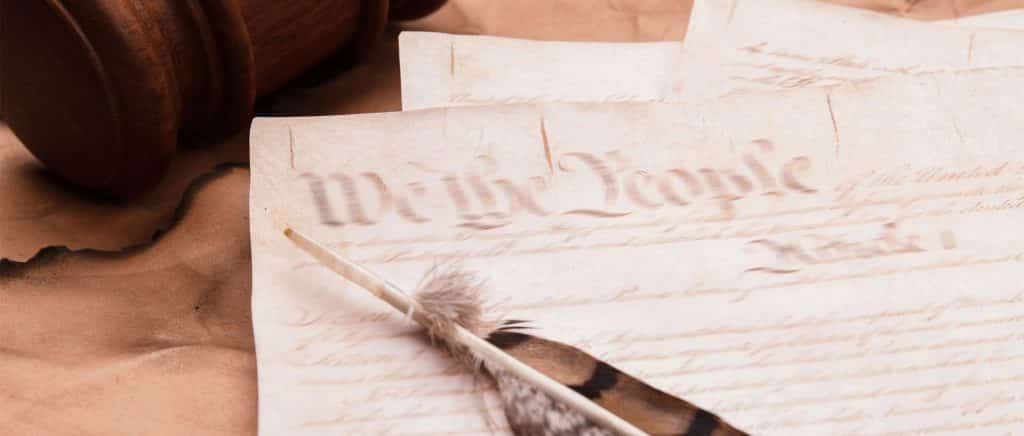A screenplay refers to a written document in which actions, dialogue, and, to a certain extent, the setting, are indicated.
This generic definition serves as a starting point for understanding all types of scripts that exist and their unique characteristics.

Types of screenplays according to their literary genre:
Theatre Scripts
These types of scripts contain both actions and dialogue, as well as the technical requirements for the play’s development. One of its characteristics is the use of many parentheses as annotations to detail the needs for scenography, costumes, sound, and lighting.
Elements of a theatrical script
The most essential elements of a theatrical script are:
- The act, with a unitary sense, is composed of several scenes. It corresponds to the main divisions of the work, such as the beginning, the knot, and the end.
- The scene composes the core of the dramatic action, usually developed in the same physical place and with the intervention of the same characters.
- The speeches are the dialogues of the characters themselves, depending on the interlocutors they can be monologues or dialogues.
- The tableau is the part of the act composed of the same scenography.
Screenplay
The screenplay differs in some aspects from the theatrical script. Despite sharing the main characteristics of the script as a literary document, the screenplay contains less information about technical requirements such as scenography, costume, lighting… besides containing a somewhat different format and structure.
How to convert a good script into a film script
Format of a screenplay
The most notable characteristics regarding the format of screenplays are:
- They are divided into sequences or scenes; a sequence is a fragment of the story that takes place in the same place and time.
- All film scripts are written in Courier New font, size 12. This is because it is the most suitable format for trying to extrapolate a page of the script into a minute of film footage.
TV Series Screenplay
Screenplays for TV series are very similar to those for films. Here is how you can distinguish them.
Differences between a TV and film script
The main difference from which the rest derive is obviously the duration of the work. A movie script lasts approximately between one and three hours while a TV script is composed of several episodes of between 20 minutes and one hour.
This characteristic means that the ways of expressing and conveying to the viewer from the screenplay are different. Mainly, the evolution of the story and the characters has to be much faster in movies.
Which is harder to write? There is no single answer, each one has a complication as they are different ways of telling a story.
Getting the viewer to empathize with the characters in a short period of time is a tough job, on the other hand, maintaining interest throughout an entire series is not an easy task.

Types of screenplays according to their form:
There are three types of screenplays according to their form and intentionality:
Literary screenplay
This type refers to the previously mentioned scripts, which are scripts in which the story is narrated in a linear manner and without a high technical content for its recording or representation.
Technical screenplay
This script’s mission is to concisely convey to the entire film crew how they want to represent and record. This script indicates both the shot sizes and frames, optics to be used, image filters or movements.
Storyboard
This type of script is very similar to the technical script, it contains fewer data in relation to optics or filters but instead contains a pictorial representation of the sequences, i.e., drawings representing the different shots that the director wishes to shoot.
History of the Screenplay
Cinema began when the Lumiere brothers created the cinematograph (not to be confused with the profession of cinematography) in 1895, a device capable of capturing images and later projecting them.
Initially, the recordings did not have any kind of guidance, not even when movies with a narrative development such as dramas or comedies began to be made.
Directors communicated what they envisioned and performed the filming and editing based on the images in their heads.
Thomas Harper Ince, one of the great producers of the early era of cinema, introduced the process of writing a detailed screenplay at both the literary and technical level in his productions in 1912 to optimize productions.
The writing of both the technical and the literary screenplay is of vital importance to minimize costs and achieve a result in line with expectations.
Many directors were still reluctant to write these screenplays, for example Charles Chaplin, who was very individualistic in the making of his films. This trend faded during the 1930s along with the appearance of direct sound in cinema.
The advent of sound caused a major restructuring within cinema, all professionals had to reinvent themselves and all production and filming rules were changed.
The appearance of dialogues was the key point necessary for scripts to become mandatory in the process of making a movie.

The rhythm in the narrative structure of a screenplay
Recapitulating, the screenplay is a text in which the story, the actions and dialogues of the characters, and the spaces and times are detailed.
The rhythm of the screenplay refers to how actions take place within it, its passage through the different acts, and the use of turning points.
The story within a screenplay
The first thing to take into account is the story, as it is what tries to be conveyed primarily. To understand the story it is necessary to understand the following concepts:
- The plot is the set of events ordered chronologically. This plot is composed of three parts:
- The beginning, where the characters and their context are presented.
- The knot, preceded by a conflict that complicates the usual development of the character and their world. At this stage, the characters will try to resolve the conflict.
- The denouement is the stage at which this conflict is resolved.
- The turning points or points of inflection are those points at which the plot takes on a new narrative line, coincide with the internal stage changes of the screenplay detailed above.
- The conflict is the turning point that begins the story, until then the screenplay merely introduces the characters, their personality, and their surroundings. The conflict is what generates an evolution both in the characters and in the plot since it moves these characters outside the world they are used to living in. It could be said that the conflict is the immovable engine of the story.
- The actions are the units of movement of the characters.
- The text refers to what the characters say.
- The subtext is what the characters say indirectly, that is, without using dialogue.
Characters
Characters are fictional beings created by an author who intervene in the development of a story, these characters must be complete, that is, have a personality consistent with their context and their background.
Characters can be very varied and different, to label them we can use different categories such as:
Function
Depending on their importance we can distinguish two types of characters:
- The main characters, are those who evolve the plot and control the story, these characters evolve meaning they go from point A to point B throughout the story, there are two types of main characters.
- The protagonists are those in which the story focuses, that is, they are the ones who move the story itself. These can be heroes, characters who believe in and defend the values of society, or antiheroes, characters who believe in the values of society but not in its system or operation. These latter do not process the need for an antagonist in the screenplay.
- The antagonists are those characters who oppose the protagonist and hinder their objective, supporting and enhancing the screenplay’s own conflict. For this reason, stories with an antihero protagonist do not require an antagonist for the story’s development.
- The secondary characters, also called supporting characters in the film world, serve to support both the protagonists and the antagonists. Each secondary character has their own story within the narrative called subplots.

Composition
Depending on their composition we can distinguish two types of characters:
- Round characters: These are very complex characters with a twisted personality and many nuances. This type of character usually presents significant internal conflicts and tends to have a very marked evolution throughout the plot.
- Flat characters: These are characters with little depth, they do not have very marked characteristics or a notable personality. Throughout the plot, they usually do not present any kind of evolution either in personality or in action.
Movement
Regarding the internal movement of the character, we could define two types:
- Dynamic characters are defined by their constant evolution, they are characters that do not stop changing throughout the story. Precisely this causes them to be unfinished characters, that is, to understand their view of the world we must evolve with them and the plot.
- Static characters usually respond to socially established models, so it is easy to know them through the narrator or the plot itself, this character model does not respond to evolution but remains flat throughout the story.
Archetypes and Stereotypes
An archetype is a character model that coexists in the collective unconscious, that is, it responds to structures mentally pre-established by society.
A stereotype is a socially accepted idea, it gives the character aspects that society sees as correct and unchanging, like the character itself.
Character presentation in a screenplay
The presentation of the character is of vital importance for a better understanding of it, in addition to achieving greater empathy in the viewer. There are different ways of presenting characters, almost as many as there are characters, but all respond to the same intention.
Documentation process for writing a screenplay
To write a screenplay, the documentation work is essential. Before trying to create a story we must cultivate ourselves and later specifically study how people live and what the worlds are like in which we want to introduce our screenplay.
The documentation process depends a lot on each screenwriter and each specific project, it is interesting to research different methods of documenting and seeking inspiration to create stories.

In general terms, we could define the documentation process for writing a screenplay in the following phases:
- Searching for inspiration: In this part of the process we will simply try to observe the world and the people around us, there are very simple exercises like going to disparate places to observe people and imagine their lives, conflicts, personalities… what are their houses, their closets etc. In short, in this phase we have to open our eyes, ears and minds to let the information organically enter our imagination.
- General documentation: Once the genre and theme of the work have been determined, it is time to outline the story and generally document ourselves about the types of people that usually converge on our target. To do this, we will look for information about the world surrounding these people.
- Specific documentation: This process involves delving into the worlds previously studied, looking for more concrete people and moving away from statistics. Try to live with them and understand their schedules, their personalities, and their way of seeing the world. If we are not able to empathize with our character, it is difficult to create arcs and evolutions in our plot.


